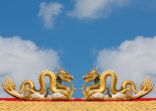Of the total assets in foreign investment funds (FIFs), around THB 64bn came from net cash inflows.
The two main contributors of the inflows were feeder funds, known as “foreign investment funds” or FIFs, that invested in the Pimco GIS Income fund and FIFs that invested in foreign funds using multi-asset strategies, the report noted.

TMB Asset Management’s feeder fund that invests in the Pimco GIS Income Fund was among the 10 best-selling newly-launched products in Asia-Pacific in 2017, according to a Broadridge Financial report. The fund, the TMB Global Income Fund, was launched in May 2017 and had net sales of $2.02bn last year.
Foreign investment funds now account for 25.77% of Thailand’s THB 4.54trn mutual fund industry, which grew 7% during the full year 2017, according to the report.
Fund managers have seen rising demand from Thai investors for overseas exposure and have launched more FIFs last year, Yoon Ng, Broadridge’s Singapore-based director for Asia global market intelligence, said previously. The number of FIFs increased to 590 in 2017 from 469 in 2016.
“Investors sought returns from abroad during the period of low domestic interest rates,” BoT said in the report.
In September last year, BoT relaxed rules on offshore investment. It raised the ceiling for offshore investments to $100bn from $75bn for domestic firms that want offshore exposure.
At the time, overseas investment had not reached the $75bn cap, but the new investment limit boosts Thailand’s Securities Exchange Commission’s flexibility in managing the amount of investment quotas requested by fund and securities firms to invest overseas.
SCB Asset Management, the second largest fund manager in Thailand, is looking to take advantage of the increasing trend toward overseas investments. This year, it is planning to go beyond its range of foreign feeder funds and develop its own actively-managed global funds that invest abroad.
China bonds as top destination
The report noted that mutual funds’ investment in foreign bonds and deposits were concentrated in three markets: China, United Arab Emirates and Qatar. China alone accounted for 55% of mutual funds’ investment in foreign bonds and deposits.

However, the central bank believes that concentration risks remain to limited.
“Fund managers continued to focus on high-rated issuers and hedged their foreign exchange risks appropriately.”
The report added that mutual funds in Thailand seemed to have invested less in risky assets in 2017.
For example, looking at the total fixed income market in Thailand, non-investment grade assets decreased to THB 20.5bn in 2017 from THB 31bn at the end of 2016, while holdings for unrated bonds were down to THB 6.6bn from THB 46.4bn during the same period.
These bonds also make up a small portion of total fixed income fund assets. Non-investment grade bonds make up for only 0.8% of fixed income assets, while unrated bonds were accounted for just 0.2%, the report added.
High risk securities as percentage of AUM

Fixed income funds remain more popular than equity funds in Thailand, according to data from the country’s Securities and Exchange Commission.
Fixed income funds accounted for 60% of the industry, with THB 2.71trn in assets at the end of 2017. By comparison, assets in equity funds make up only 22% of the fund industry, with THB 979.71bn in assets.

















